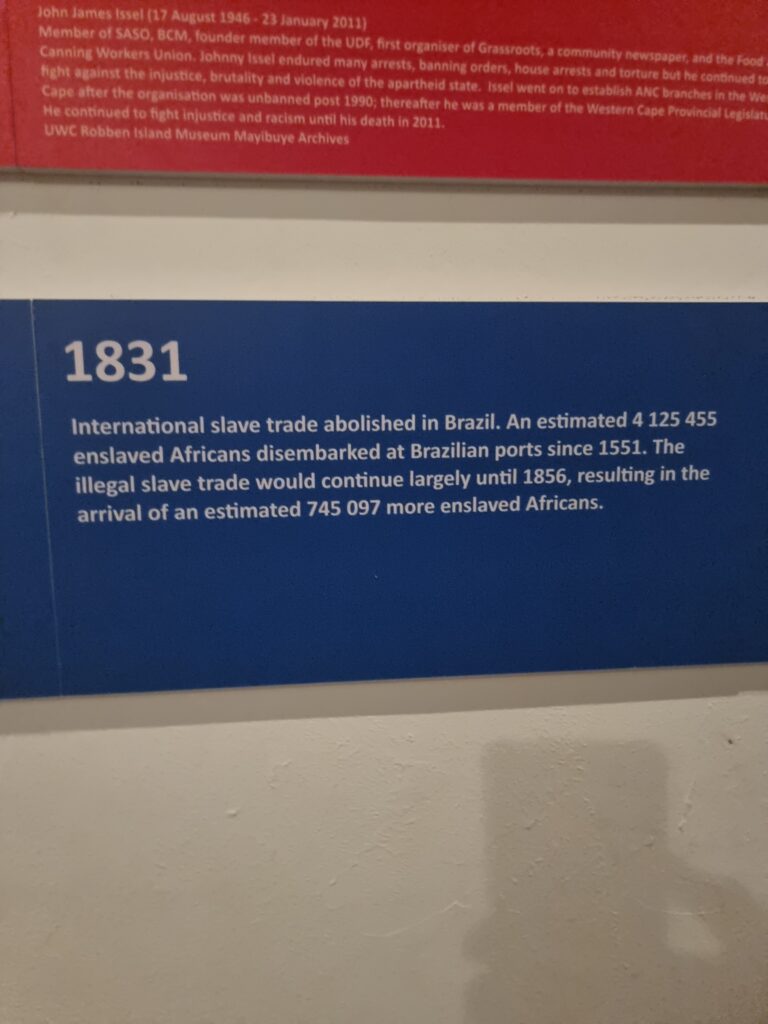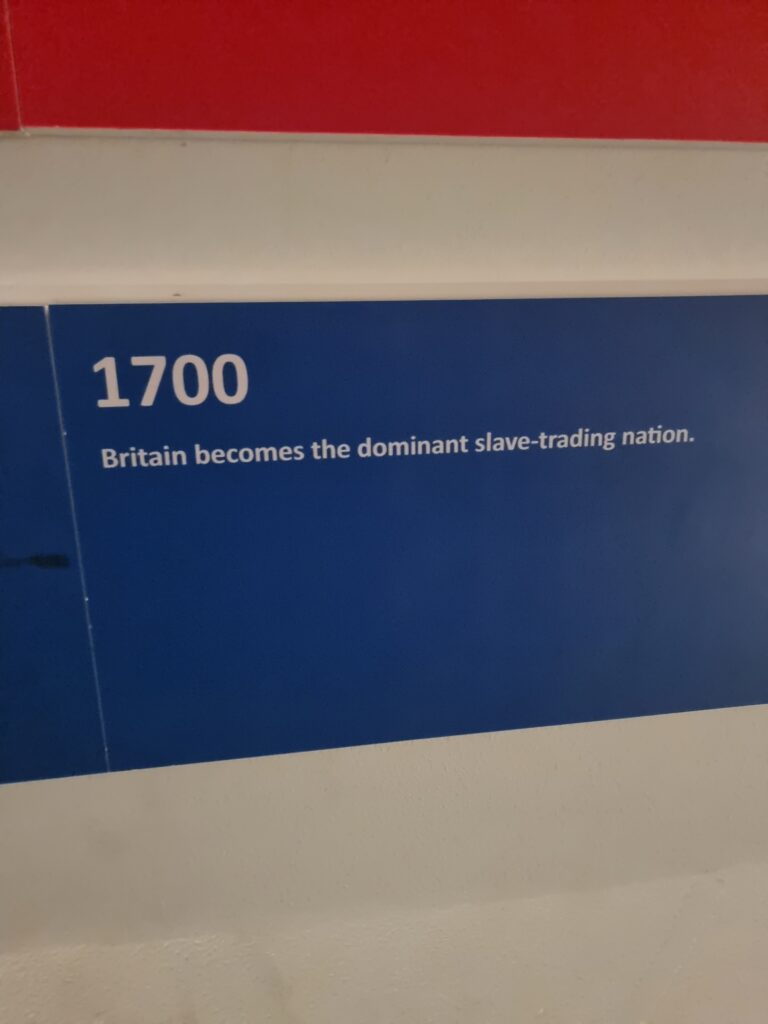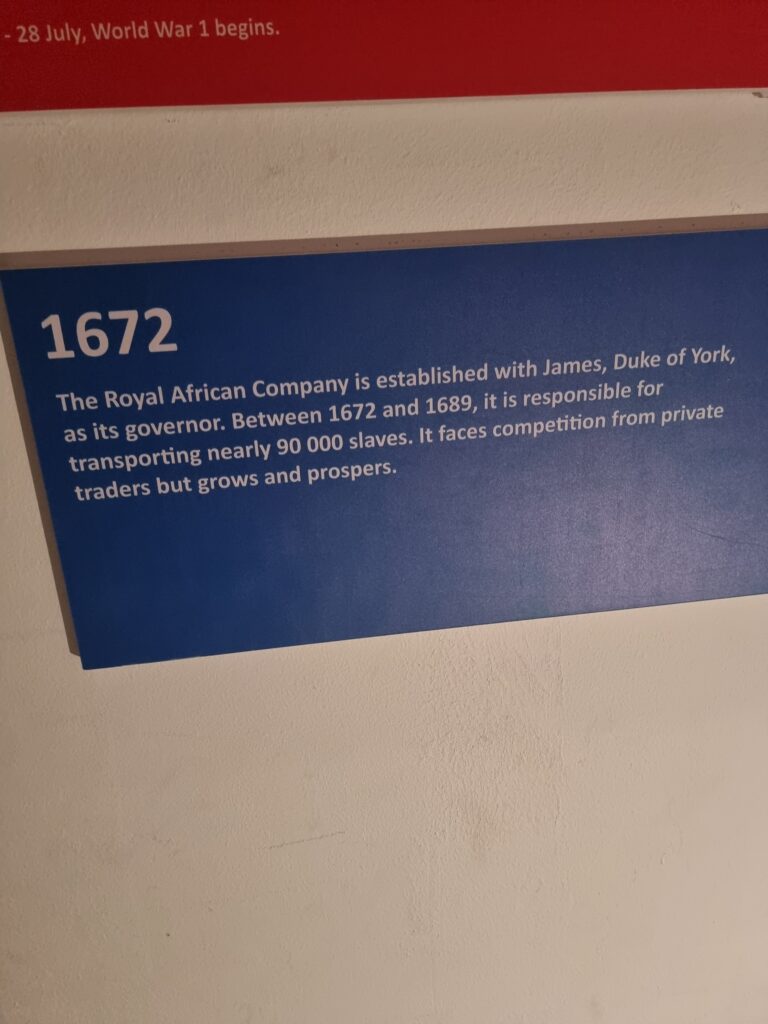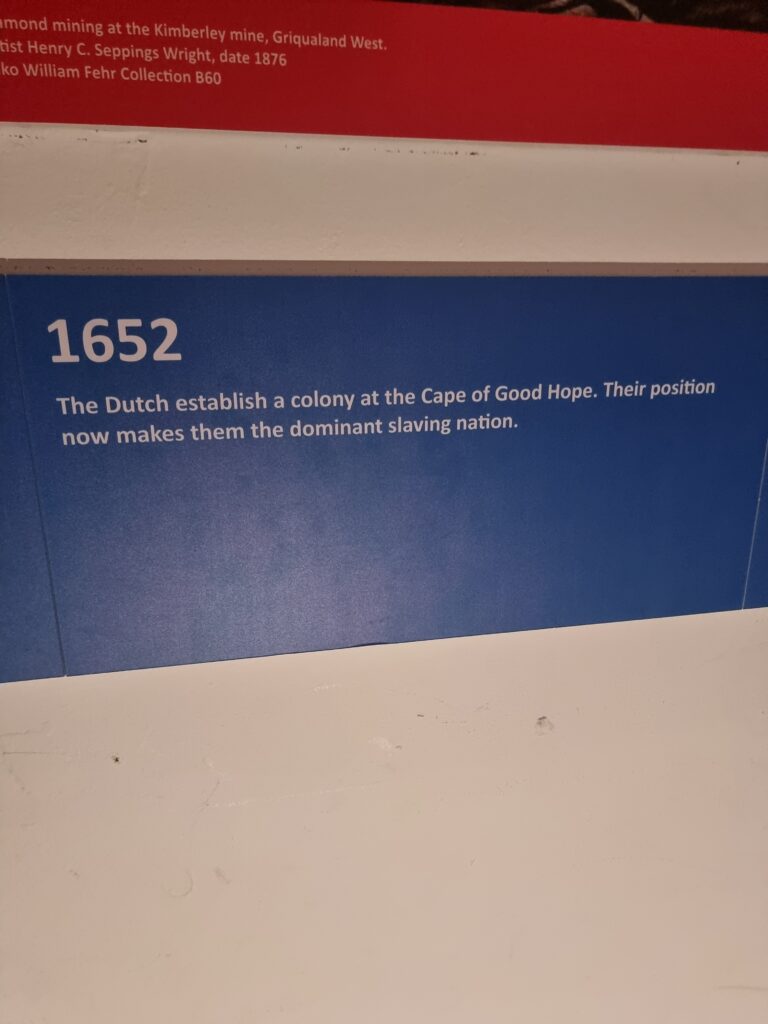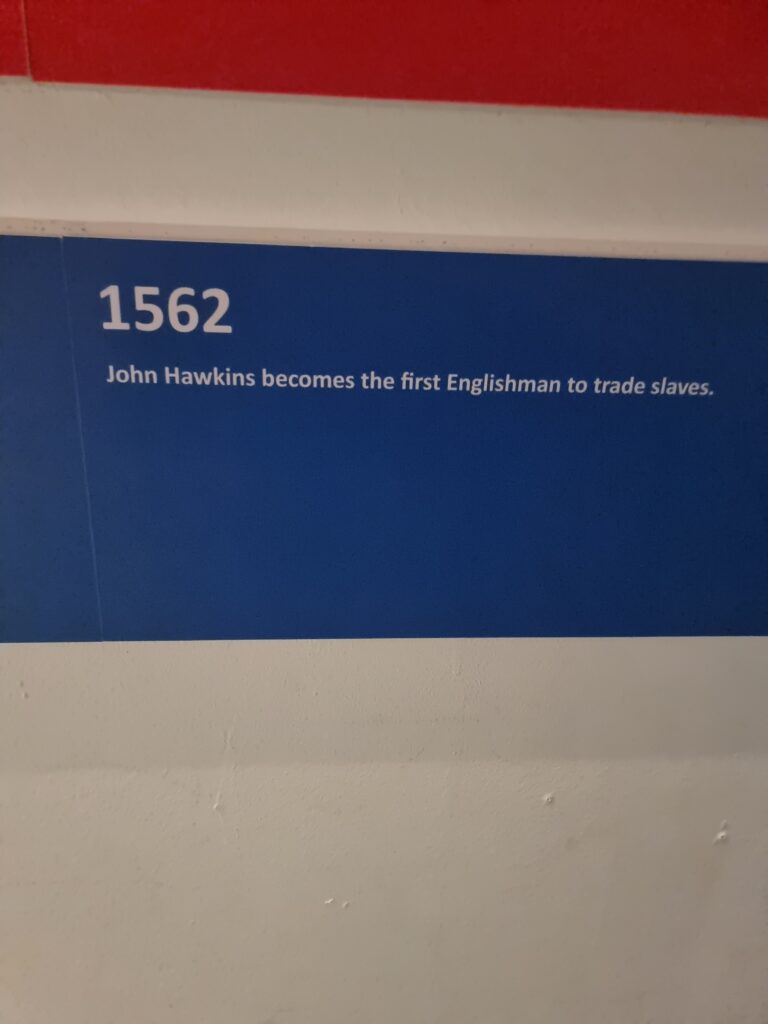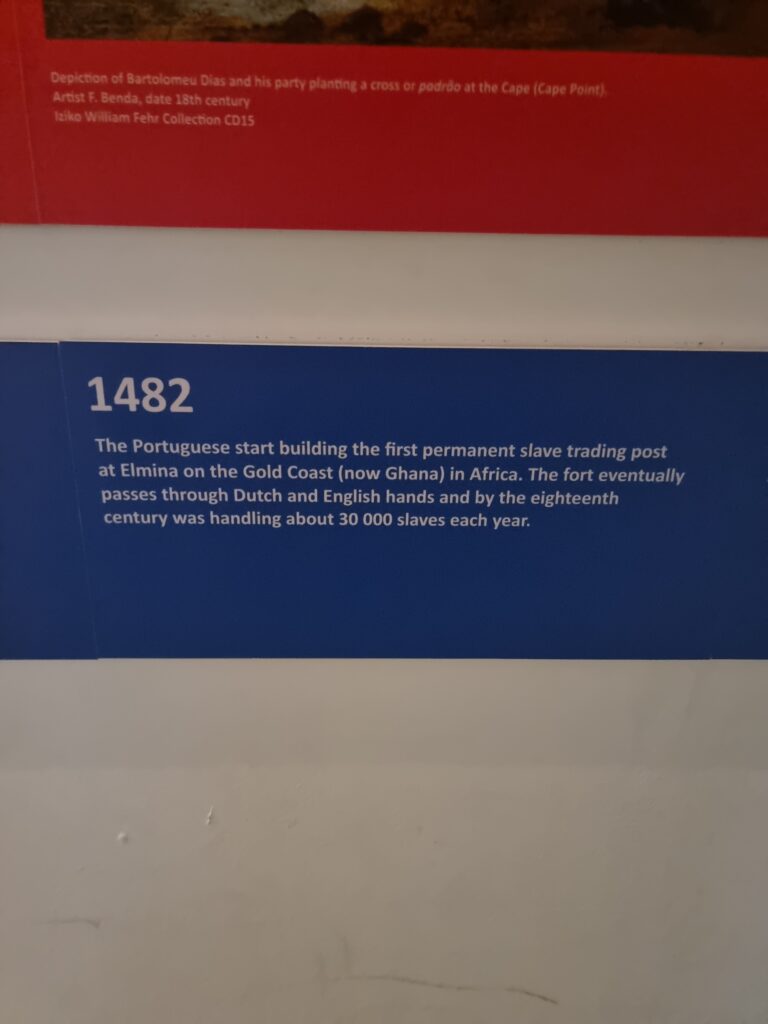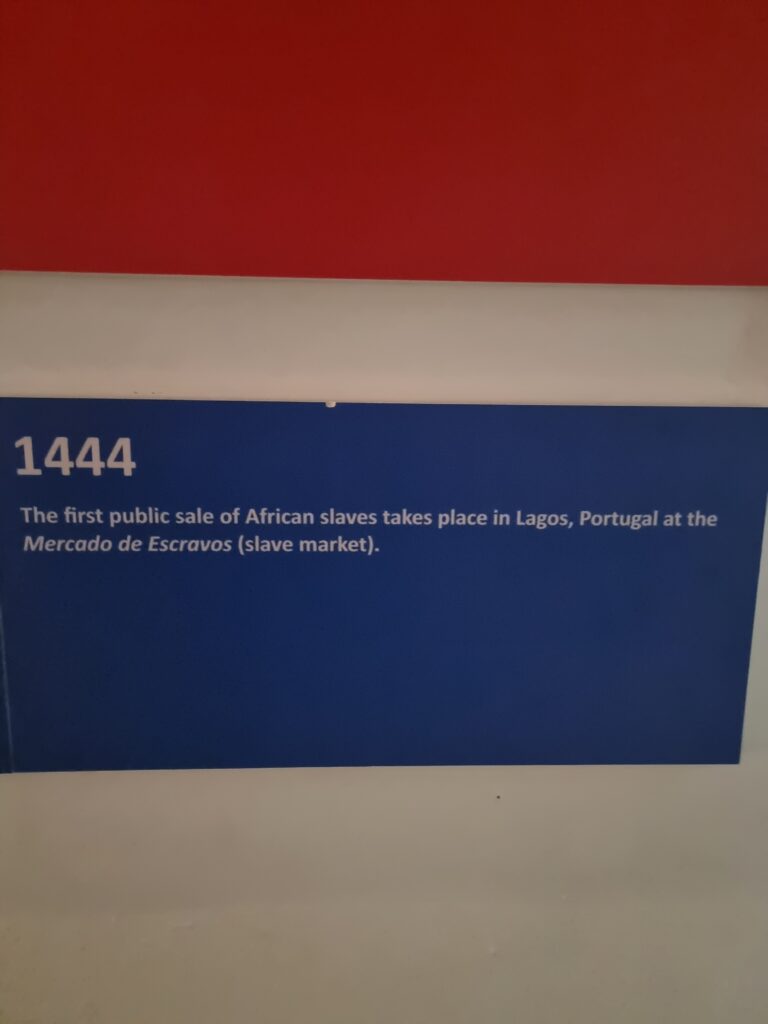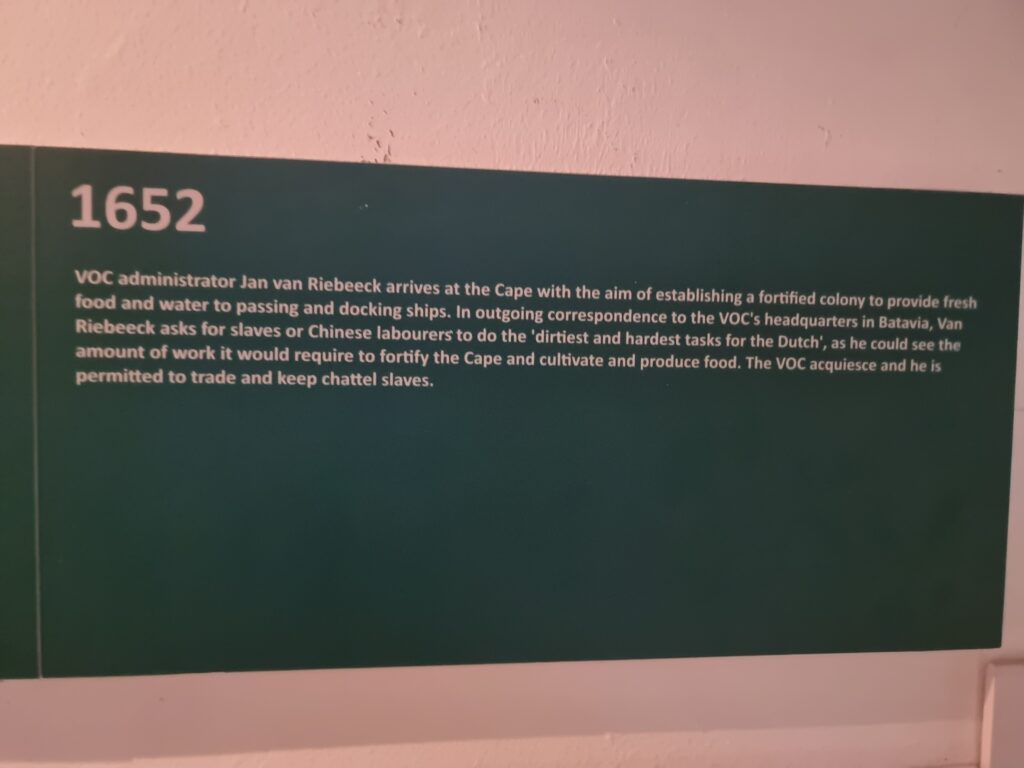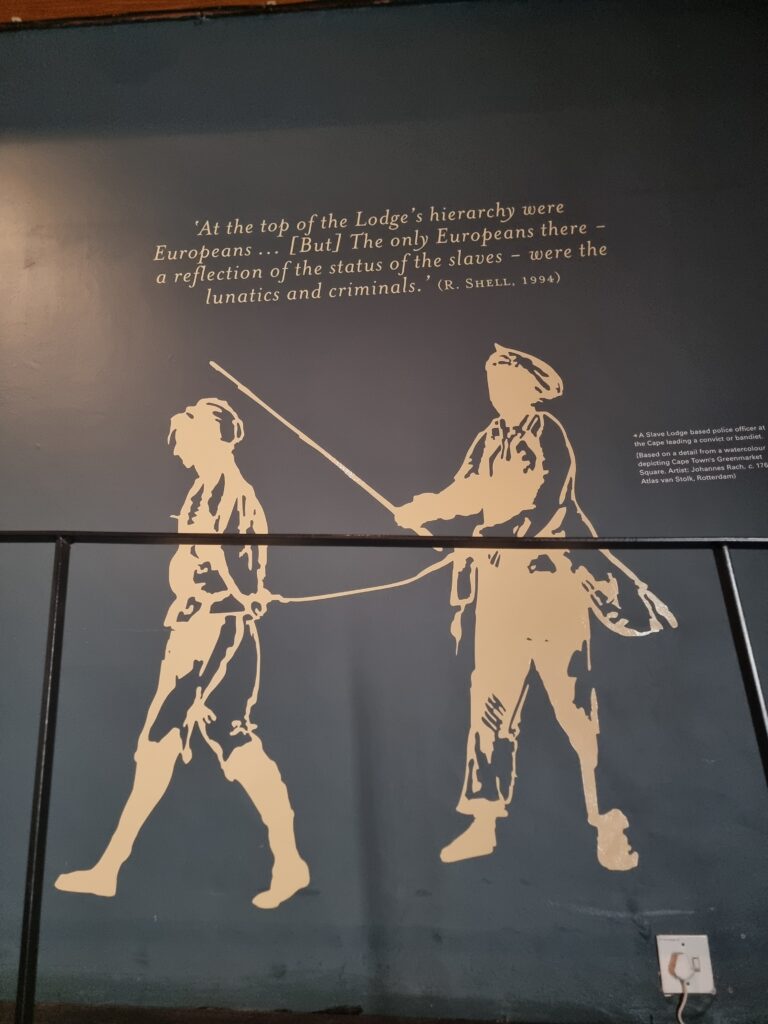
A Journey Through the Slave Lodge, District Six, and Bo-Kaap
My recent visit to the Slave Lodge, District Six Museum, and Bo-Kaap Museum in Cape Town was both enlightening and deeply moving. These sites stand as powerful reminders of a history that continues to shape South Africa today. I also visited the Castle of Good Hope, another significant historical landmark that adds layers to the story of this country’s past. Through these visits, I gained a better understanding of the legacy of slavery, the people who endured it, and the impact it has had on the South African landscape.
The VOC: Trade, Industry, and the Birth of the Stock Market
The Dutch East India Company, or VOC (Vereenigde Oostindische Compagnie), was a massive enterprise with far-reaching influence in global trade and industry. What set the VOC apart from other trading companies of the time was its pioneering role in joint-stock ventures, which laid the groundwork for the modern stock market. Investors could buy shares in the VOC, spreading the risk of costly expeditions across a broader base and making it possible for the company to undertake the substantial investment needed to send ships on long, perilous journeys.
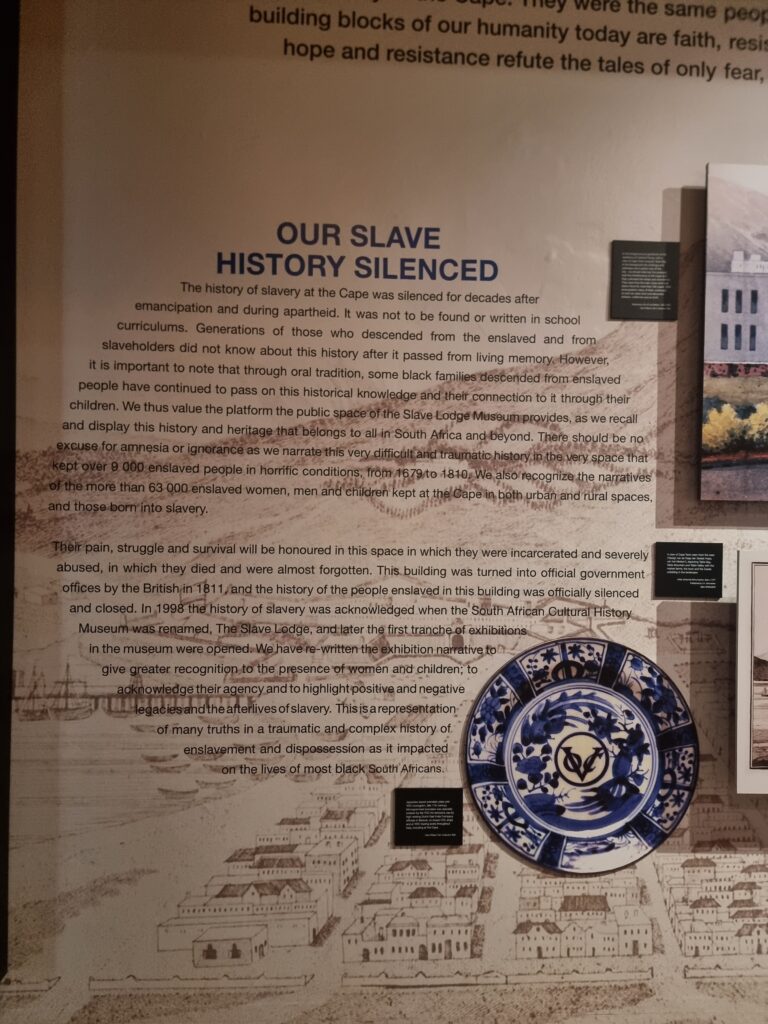
The VOC operated as a powerful multinational corporation, with its own military, administrative systems, and a vast network of trade routes spanning from Europe to Asia. It was within this context that the VOC established a refreshment station at the Cape of Good Hope in 1652. The station was initially intended to supply fresh food, water, and provisions to VOC ships traveling between Europe and the East Indies. However, the strategic location and the fertile land soon led to the establishment of a more permanent settlement, transforming the Cape into a key outpost for the VOC’s trading empire.
The Slave Lodge and Domestic Slavery
One of the most striking places I visited was the Slave Lodge in Cape Town, a building that housed slaves owned by the VOC. The Lodge was more than just a residence; it was a prison-like structure designed to confine and control the slaves who worked directly for the company. However, not all slaves lived in the Lodge. Many were kept in the homes of settlers and VOC officials, where they worked as domestic servants, farm laborers, and artisans. These slaves were an integral part of the households they served, yet they remained property—chattel—deprived of freedom and autonomy.
The Khoikhoi People: A Complex History of Dispossession and Resistance
The expansion of the Cape Colony had devastating consequences for the indigenous Khoikhoi people. Unlike the San, who were primarily hunter-gatherers, the Khoikhoi were pastoralists and farmers with sophisticated techniques for managing livestock and cultivating the land. Their way of life was deeply connected to their land, which provided not just sustenance but also cultural and spiritual significance.
As the Dutch settlers expanded their farms and increased their demand for land, the Khoikhoi were systematically dispossessed of their territories. By the 18th century, many Khoikhoi communities had been forced into servitude or driven from their lands altogether. The loss of their land also meant the loss of their means of survival—both their agricultural practices and their ability to hunt and gather food were severely disrupted. This dispossession played a significant role in sparking the Cape Frontier Wars, as cattle raiding and resistance against the encroaching settlers became more common.
My interest in the Khoikhoi people deepened after reading “The Land Wars” by John Laband, a book that explores the integration of the Khoikhoi into Xhosa society. This integration, driven by necessity and shared resistance against colonial encroachment, was a complex process that further complicates our understanding of the region’s history. The Khoikhoi’s integration into Xhosa society was a survival strategy, but it also contributed to the broader resistance movements that challenged colonial rule in the Cape.
Chattel Slavery in the Cape Colony (1658-1838)
Slavery in the Cape was a system of chattel slavery, where slaves were considered the property of their owners, with no rights or autonomy. Between 1658 and 1838, over 63,000 men, women, and children were enslaved at the Cape. These slaves were essential to the agricultural economy, providing the labor needed to cultivate crops, tend to livestock, and maintain the colony’s infrastructure. The physical settlements, including many of the buildings still standing today, were built by the hands of these enslaved people.
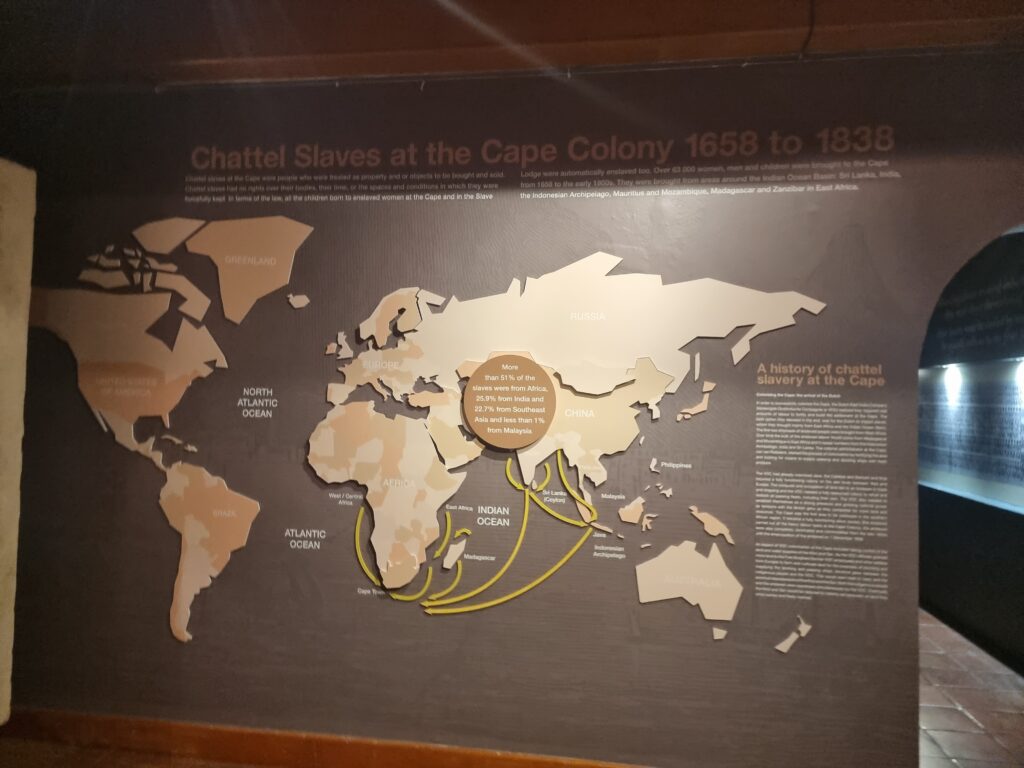
The Meermin: A Voyage Marked by Desperation
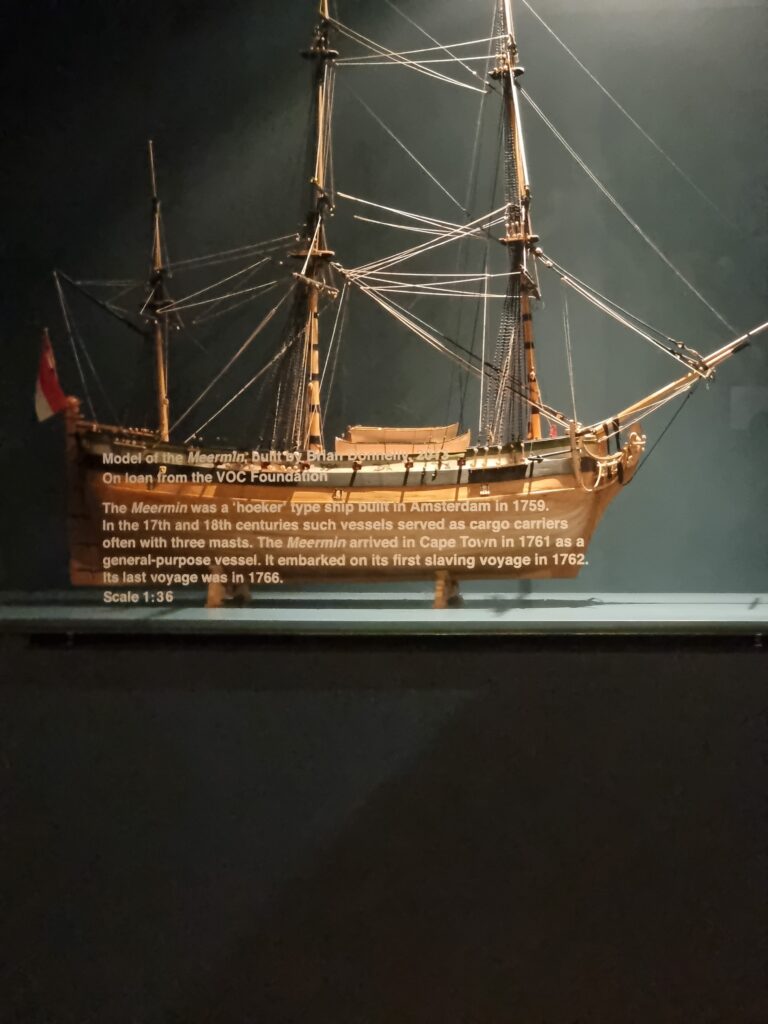
One particularly haunting story I learned about was that of the Meermin, a VOC ship that arrived in Cape Town in 1761 carrying a cargo of slaves from Madagascar. During the voyage, the slaves attempted a revolt, hoping to seize the ship and gain their freedom. Although the revolt was ultimately unsuccessful, the story of the Meermin serves as a powerful reminder of the desperation and resilience of those who were enslaved. The conditions on these slave ships were horrific, with cramped quarters, disease, and the ever-present threat of violence.
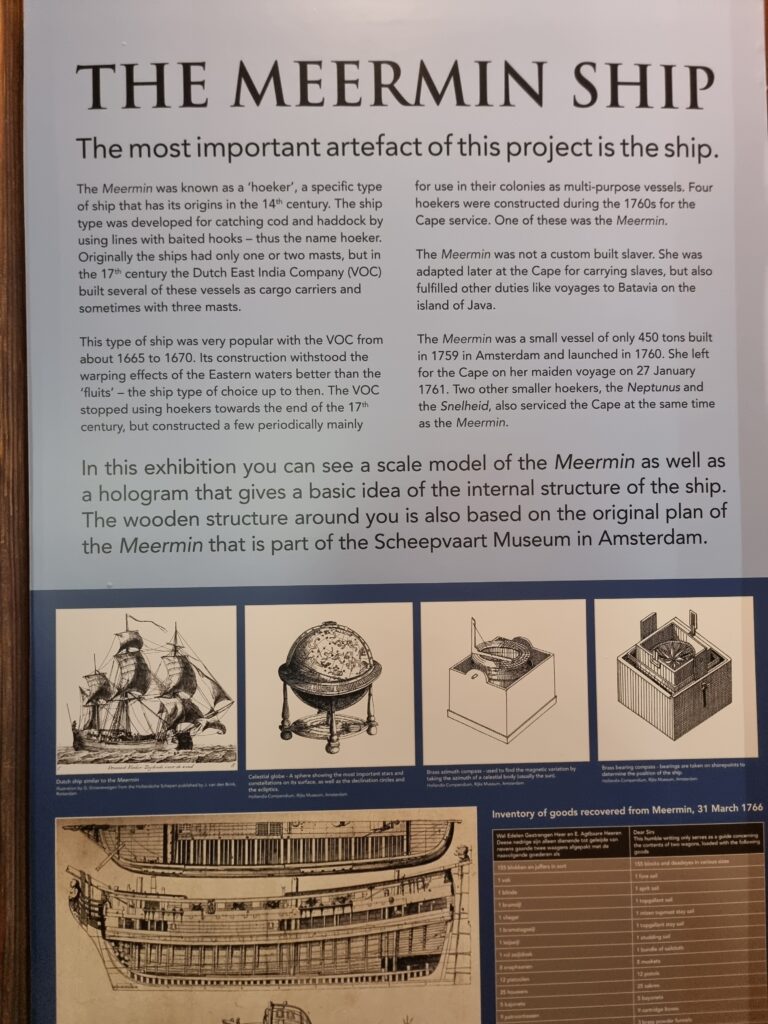
The Politics of Slavery and the Path to Emancipation
Slavery was not easily dismantled, and the process of emancipation was fraught with complexities. Although the British Empire abolished the transatlantic slave trade in 1807, it wasn’t until 1834 that slavery was officially abolished in the Cape Colony. Even then, the emancipation process was not straightforward. Former slaves were subjected to a period of “apprenticeship” where they continued to work for their former owners without pay, often for several more years. This system was designed to ease the transition, but in reality, it extended the exploitation of former slaves and delayed their true freedom.
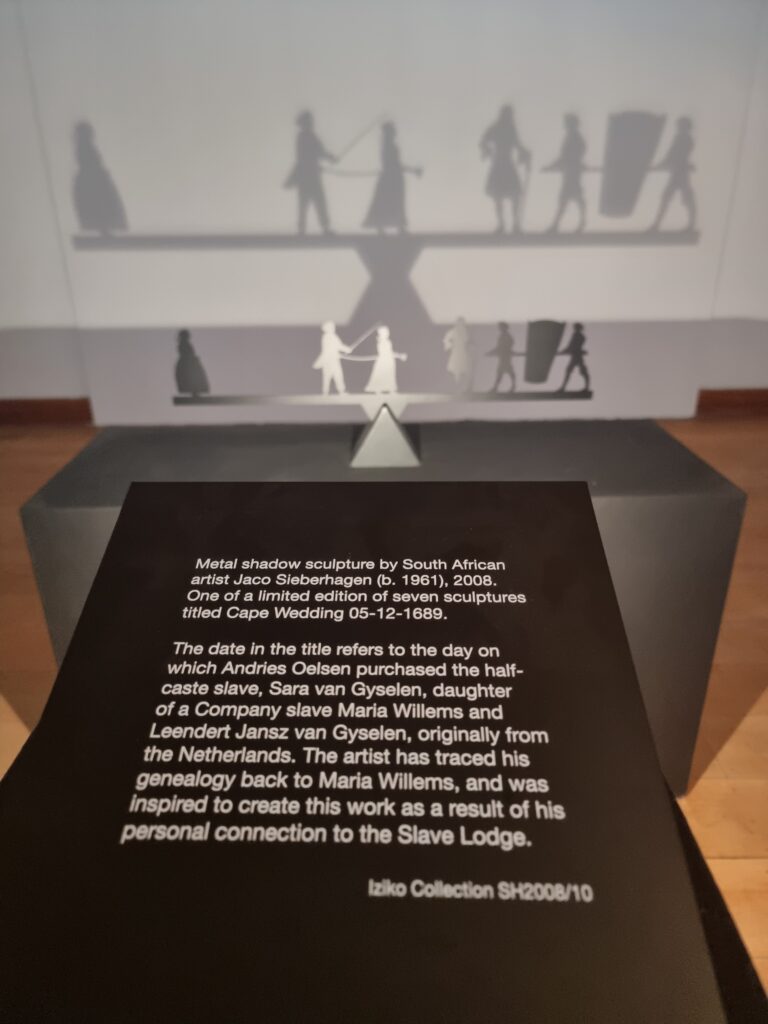
Resistance and the Griqua People
While the term “Maroons” is more commonly associated with runaway slaves in the Americas, in the context of South Africa, similar groups of runaway slaves were known as “Drosters.” These individuals fled into remote areas, often joining indigenous communities or forming new groups. One significant group that emerged from this resistance was the Griqua people, a mixed-race community that included descendants of runaway slaves, Khoikhoi, and European settlers. The Griqua played a significant role in resisting colonial authority and establishing their own communities, which were relatively autonomous.
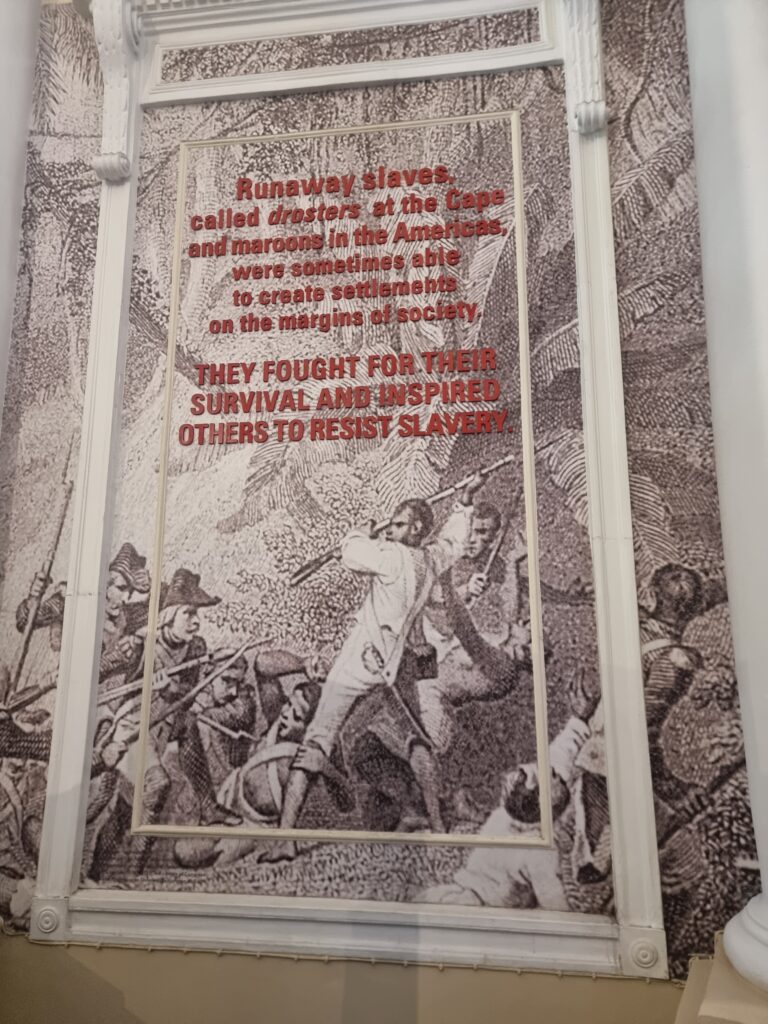
The Complex Cultural History of the Coloured Community
The legacy of slavery is deeply woven into the history and identity of the Coloured community in South Africa. This community emerged from the blending of slaves, indigenous peoples, and European settlers, creating a rich but complex cultural tapestry. The psychological impact of this history is profound. Many descendants of slaves grew up without knowledge of their roots, their heritage obscured by the chains of their ancestors’ bondage. This loss of identity, of not knowing where one comes from, is a wound that has yet to fully heal. It’s a legacy of broken families, where the stories of origins were often silenced or lost.
Conclusion
Visiting these historical sites in Cape Town provided me with a deeper understanding of the legacy of slavery in South Africa. The VOC, with its expansive power and pioneering role in global trade, played a significant role in shaping the early history of the Cape. The effects of slavery, dispossession, and resistance continue to resonate in the complex social and cultural dynamics of the region today. By remembering and reflecting on this history, we can better understand the challenges and opportunities that lie ahead for South Africa, and honor the resilience of those who endured such unimaginable hardships.

